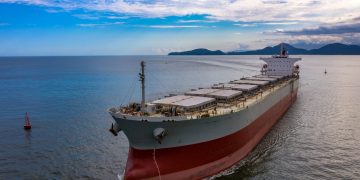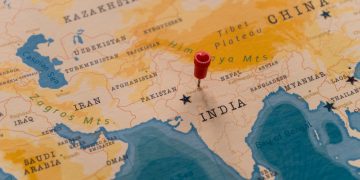Kostas G. Gkonis, Secretary General, Intercargo, says the 2016 topics and concerns continue in 2017, therefore, liquefaction remains a major problem for dry bulk shipping as well. Dr. Gkonis said that the Association is looking into future amendments to the IMSBC Code and plans to develop a new guide for masters on cargoes that may liquefy to increase awareness on that important topic.
SAFETY4SEA: Do you think there was a significant success and/or progress made with respect to maritime safety during 2016? Focusing on your area of expertise, what were the most important industry developments within 2016?
Kostas Gkonis: INTERCARGO is much concerned with the safe transport of cargoes. In this context we are looking into future amendments to the IMSBC Code and specific cargo issues (Bauxite, Coal, DRI (D), Nickel Ore, Indonesian Cargoes, Philippine Cargoes etc.).
Liquefaction remains a major problem for dry bulk shipping. Crew and bulk carrier owners are concerned and want to tackle the problem. Charterers and shippers should be continuously reminded and requested to do their share to deal with the problem. The shipper is responsible for ensuring a safe cargo is loaded. It is the shipper not the flag state who has to get verification the cargo is safe. It is only when we get full transparency and cooperation from the shippers with accurate shippers declarations on the composition of bulk cargoes will we be able to fully identify and mitigate the risks involved in the safe carriage of cargoes and assure the protection of Seafarers. Lives are lost and even one lost life is too many.
INTERCARGO achieved success through IMO towards improved testing and verification of the cargo carriage conditions for solid dry cargoes.
We are also following closely developments on IMO Goal Based Standards and IACS Common Structural Rules.
S4S: Focusing on your area of expertise, what do you think that it will be the biggest safety challenge(s) for the maritime safety for the 2017?
K.G.: The 2016 topics and concerns continue in 2017. Continuous effort should be made for independent surveyors to get access to, and carry out inspections of, stock piles before loading as it is essential to ensure safety. Shippers and ports lacking co-operation in this respect need to be brought to attention of safety requirements.
S4S: What would be the 2017 resolutions for your company/ organization? What are your goals and aspirations to enhance shipping safety? Do you have any new projects on the pipeline and/or plans for 2017 that you would like to share?
K.G.: After producing in 2016 a booklet on “Carrying solid bulk cargoes safely”, INTERCARGO is planning to develop a guide for masters on cargoes that may liquefy, which will provide the master with guidance on the loading and carriage of potential Group A cargoes.
INTERCARGO’s initiatives in its pursuit of a safe, efficient, high quality and environmentally friendly dry cargo shipping industry comprise producing publications (e.g. 2016’s Carrying Solid Bulk Cargoes Safely, and Casualties Report) and being active (such as through participation in Industry Working and Correspondence Groups, as well as at IMO) on topics related to our work programme, including also Design Standards, Air emissions, Environmental Legislation, Reception Facilities, Lifting Appliances, and Security, to name a few.
S4S: What is your overall forecast for shipping safety in 2017 and what would you like to share and/or wish and/or ask other industry stakeholders?
K.G.: In 2016 the market suffered with the Baltic Dry Index diving to a historic low, before showing improvement in the second half of the year. The supply side will hopefully enjoy slower growth in the next years, in the face of more uncertain demand patterns. In this challenging commercial context, regulatory requirements have been progressing at a rapid pace. INTERCARGO’s commitment to safety, efficiency, and the environment, have become reference themes, even more so as, especially in difficult times, ‘quality’ makes the difference.
The views presented hereabove are only those of the author and not necessarily those of SAFETY4SEA and are for information sharing and discussion purposes only.

































































